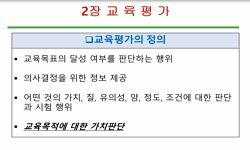This study aims to present objective criteria for performance evaluation and selection of AI modeling tools by comparing and analyzing the performance of ‘Rodin’ and ‘Mesh’, which are AI-based 3D modeling tools. As the demand f...
http://chineseinput.net/에서 pinyin(병음)방식으로 중국어를 변환할 수 있습니다.
변환된 중국어를 복사하여 사용하시면 됩니다.
- 中文 을 입력하시려면 zhongwen을 입력하시고 space를누르시면됩니다.
- 北京 을 입력하시려면 beijing을 입력하시고 space를 누르시면 됩니다.

AI 기반 3D 모델링 도구 성능 비교와 평가 - Rodin과 Meshy의 기하학적, 토폴로지적, 시각적 분석 = Performance Comparison and Evaluation of AI-Based 3D Modelling Tools - Geometric, Topological, and Visual Analysis of Rodin and Meshy
한글로보기https://www.riss.kr/link?id=A109469613
-
저자
곽성조 (광주과학기술원)
- 발행기관
- 학술지명
- 권호사항
-
발행연도
2024
-
작성언어
Korean
-
주제어
AI 3D 모델링 ; ‘Rodin’ ; ‘Meshy’ ; 기하학적 정확도 ; 토폴로지 품질 ; 시각적 품질 ; 성능 평가 ; AI 3D modeling ; ‘Rodin’ ; ‘Meshy’ ; Geometric Accuracy ; Topology Quality ; Visual Quality ; Performance Evaluation
-
등재정보
KCI등재
-
자료형태
학술저널
- 발행기관 URL
-
수록면
199-214(16쪽)
- 제공처
-
0
상세조회 -
0
다운로드
부가정보
다국어 초록 (Multilingual Abstract)
This study aims to present objective criteria for performance evaluation and selection of AI modeling tools by comparing and analyzing the performance of ‘Rodin’ and ‘Mesh’, which are AI-based 3D modeling tools. As the demand for 3D modeling increases, tools that automatically generate 3D models based on AI technology are rapidly developing, such as metaverse, digital twin, and game development, and standardized methodologies for performance evaluation are required accordingly. In the study, the 3D model generated by ‘Rodin’ and ‘Meshy’ was analyzed as three main evaluation indicators: geometric accuracy, topology quality, and visual quality. Each indicator was subdivided and set to enable quantitative evaluation, and statistical significance was verified through repeated measurements to secure the reliability of the data. In the geometric accuracy evaluation, the number of vertices and faces, triangle irregularity, normal vector accuracy, and UV mapping quality were analyzed, and as a result, ‘Meshy’ showed strength in higher resolution and detailed expression power, and Rodin showed excellent structural stability due to low triangular irregularity. Mesh connectivity, hole presence, and self-intersection were evaluated in the topology quality analysis, and both tools showed structural consistency and stability, confirming that reliable results can be provided in physical simulations or animations. As a result of visual quality analysis, ‘Meshy’ recorded high scores in detail expressiveness and silhouette complexity, showing advantageous performance in applications where visual completion is important. The significance of this study is as follows. First, a standardized evaluation framework was presented that can analyze the performance of AI-based 3D modeling tools from various angles through evaluation indicators and methodologies centered on geometric, topological, and visual quality. Second, by analyzing the difference in performance between ‘Rodin’ and ‘Meshy’, an appropriate tool selection criterion for each application field was prepared, and through this, the possibility of industrial use of AI-based 3D modeling tools was increased. Third, by empirically revealing the strengths and weaknesses of each tool, it will provide important reference materials for setting the direction of improvement and development of AI modeling tools in the future. In future research, it is necessary to expand the evaluation system by comparing performance with more diverse AI-based 3D modeling tools and adding new evaluation indicators such as texture quality and animation suitability. In addition, research will be needed to more accurately evaluate usability in practical applications by adding evaluation indicators in terms of user experience (UX) and to verify usefulness in real projects through practical case studies.
국문 초록 (Abstract)
본 연구는 AI 기반 3D 모델링 도구인 ‘Rodin’과 ‘Meshy’의 성능을 비교 분석하여 AI 모델링 도구의 성능 평가 및 선택을 위한 객관적 기준을 제시하는 데 목적이 있다. 메타버스, 디지털 트윈,...
본 연구는 AI 기반 3D 모델링 도구인 ‘Rodin’과 ‘Meshy’의 성능을 비교 분석하여 AI 모델링 도구의 성능 평가 및 선택을 위한 객관적 기준을 제시하는 데 목적이 있다. 메타버스, 디지털 트윈, 게임 개발 등 3D 모델링의 수요가 증가함에 따라 AI 기술을 기반으로 3D 모델을 자동 생성하는 도구들이 빠르게 발전하고 있으며 이에 따른 성능 평가의 표준화된 방법론 이 요구되고 있다. 연구에서는 ‘Rodin’과 ‘Meshy’가 생성한 3D 모델을 기하학적 정확도, 토폴로지 품질, 시각적 품질이라 는 세 가지 주요 평가 지표로 분석했다. 각 지표는 정량적 평가가 가능하도록 세분화하여 설정하였으며 데이터의 신뢰성 확보를 위해 반복 측정을 통해 통계적 유의성을 검증하였다. 기하학적 정확도 평가에서는 정점 수와 면 수, 삼각형 불규칙 성, 법선 벡터 정확도, UV 맵핑 품질 등을 분석하였고 그 결과 ‘Meshy’는 더 높은 해상도와 세밀한 표현력에서 강점을 보 였으며 ‘Rodin’은 삼각형 불규칙성이 낮아 구조적 안정성이 우수함을 확인하였다. 토폴로지 품질 분석에서는 메쉬 연결성, 홀 존재 여부, 자기 교차 여부를 평가하였고 두 도구 모두 구조적 일관성과 안정성을 보여 물리적 시뮬레이션이나 애니메 이션에서 신뢰성 높은 결과를 제공할 수 있음을 확인하였다. 시각적 품질 분석 결과, ‘Meshy’는 디테일 표현력과 실루엣 복잡도에서 높은 점수를 기록하여 시각적 완성도가 중요한 응용 분야에 유리한 성능을 보였다. 본 연구의 의의는 다음과 같다. 첫째, 기하학적, 토폴로지적, 시각적 품질을 중심으로 한 평가 지표와 방법론을 통해 AI 기반 3D 모델링 도구의 성능 을 다각도로 분석할 수 있는 표준화된 평가 프레임워크를 제시하였다. 둘째, ‘Rodin’과 ‘Meshy’의 성능 차이를 분석하여 응용 분야별 적합한 도구 선택 기준을 마련하였고 이를 통해 AI 기반 3D 모델링 도구의 산업적 활용 가능성을 높였다. 셋 째, 각 도구의 강점과 약점을 실증적으로 밝혀 향후 AI 모델링 도구의 개선과 발전 방향을 설정하는 데 중요한 참고 자료 를 제공할 것이다. 향후 연구에서는 더 다양한 AI 기반 3D 모델링 도구를 대상으로 성능을 비교하고 텍스처 품질, 애니메 이션 적합성 등 새로운 평가 지표를 추가하여 평가 체계를 확장할 필요가 있다. 또한, 사용자 경험(UX) 측면의 평가 지표 를 추가하여 실무적 적용에서의 사용성을 보다 정확히 평가하고 실무 사례 연구를 통해 실제 프로젝트에서의 유용성을 검 증하는 연구가 필요할 것이다.
동일학술지(권/호) 다른 논문
-
지역 특산물을 활용한 지역축제 브랜드 자산 가치 상승 및 발전 방향성에 대한 연구 - 국내외 토마토 축제를 중심으로
- 한국상품문화디자인학회
- 전미향
- 2024
- KCI등재
-
Kano-AHP-TRIZ 혼합모델 기반 AIGC을 활용한 반려동물 지능형 항공 여행 캡슐 디자인 연구 - 소형 반려견을 중심으로
- 한국상품문화디자인학회
- 이유란
- 2024
- KCI등재
-
데페이즈망 기법 범주화에 따른 현대 메이크업 디자인 연구
- 한국상품문화디자인학회
- 박수진
- 2024
- KCI등재
-
소셜 미디어 사진이 브랜드와 소비자 관계에 미치는 영향 - 디지털 시대의 시각적 상호작용
- 한국상품문화디자인학회
- 이용창
- 2024
- KCI등재




 KISS
KISS





